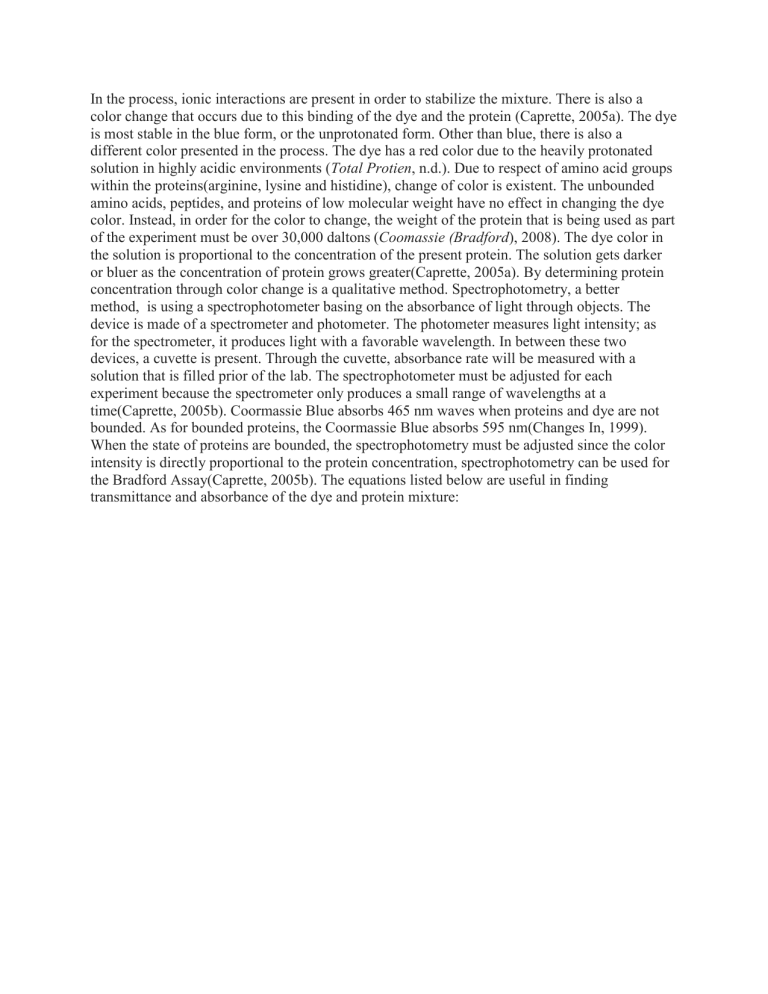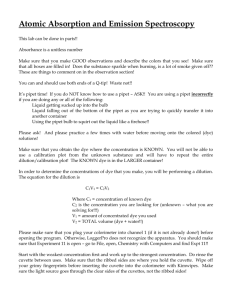
In the process, ionic interactions are present in order to stabilize the mixture. There is also a color change that occurs due to this binding of the dye and the protein (Caprette, 2005a). The dye is most stable in the blue form, or the unprotonated form. Other than blue, there is also a different color presented in the process. The dye has a red color due to the heavily protonated solution in highly acidic environments (Total Protien, n.d.). Due to respect of amino acid groups within the proteins(arginine, lysine and histidine), change of color is existent. The unbounded amino acids, peptides, and proteins of low molecular weight have no effect in changing the dye color. Instead, in order for the color to change, the weight of the protein that is being used as part of the experiment must be over 30,000 daltons (Coomassie (Bradford), 2008). The dye color in the solution is proportional to the concentration of the present protein. The solution gets darker or bluer as the concentration of protein grows greater(Caprette, 2005a). By determining protein concentration through color change is a qualitative method. Spectrophotometry, a better method, is using a spectrophotometer basing on the absorbance of light through objects. The device is made of a spectrometer and photometer. The photometer measures light intensity; as for the spectrometer, it produces light with a favorable wavelength. In between these two devices, a cuvette is present. Through the cuvette, absorbance rate will be measured with a solution that is filled prior of the lab. The spectrophotometer must be adjusted for each experiment because the spectrometer only produces a small range of wavelengths at a time(Caprette, 2005b). Coormassie Blue absorbs 465 nm waves when proteins and dye are not bounded. As for bounded proteins, the Coormassie Blue absorbs 595 nm(Changes In, 1999). When the state of proteins are bounded, the spectrophotometry must be adjusted since the color intensity is directly proportional to the protein concentration, spectrophotometry can be used for the Bradford Assay(Caprette, 2005b). The equations listed below are useful in finding transmittance and absorbance of the dye and protein mixture:


